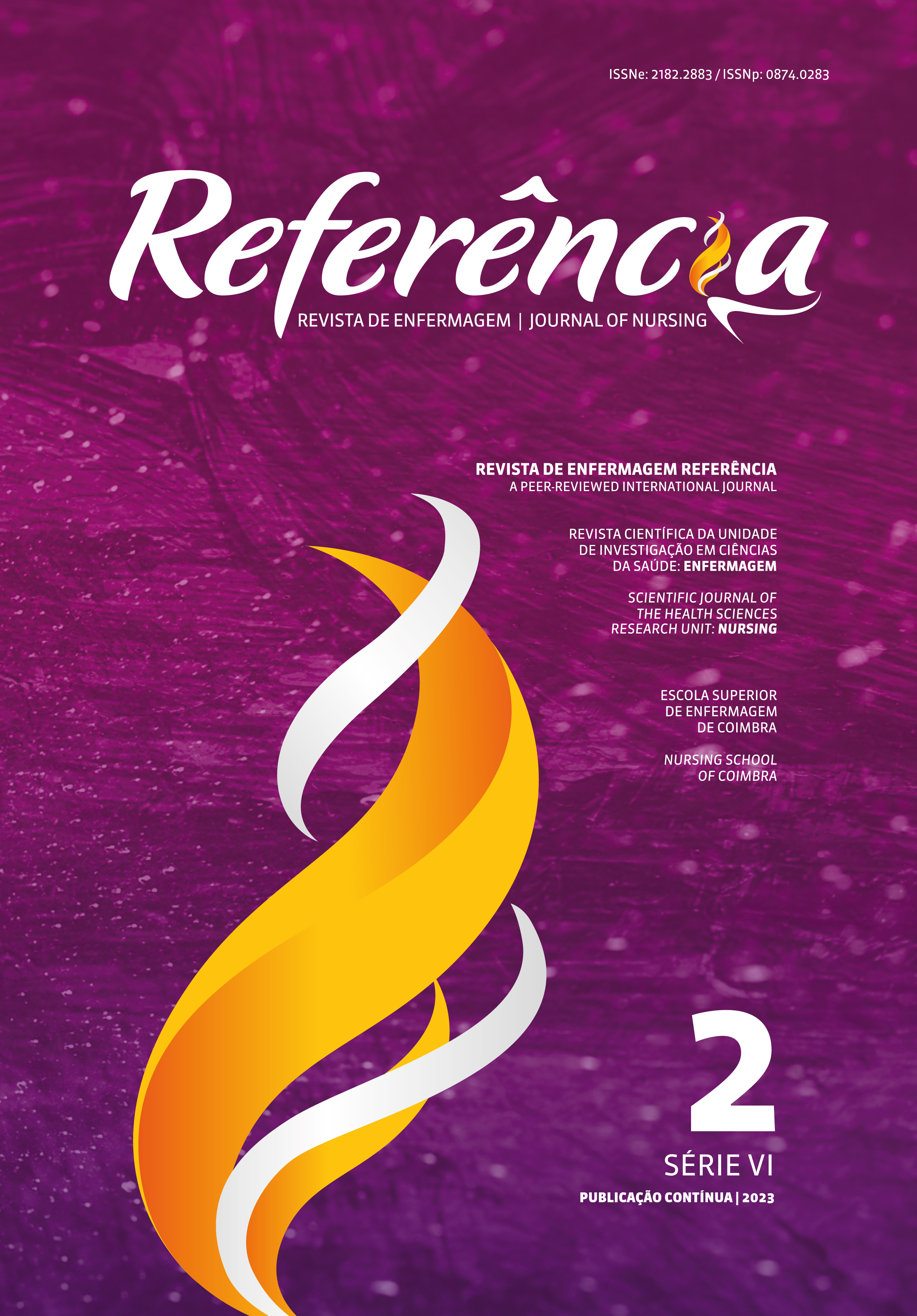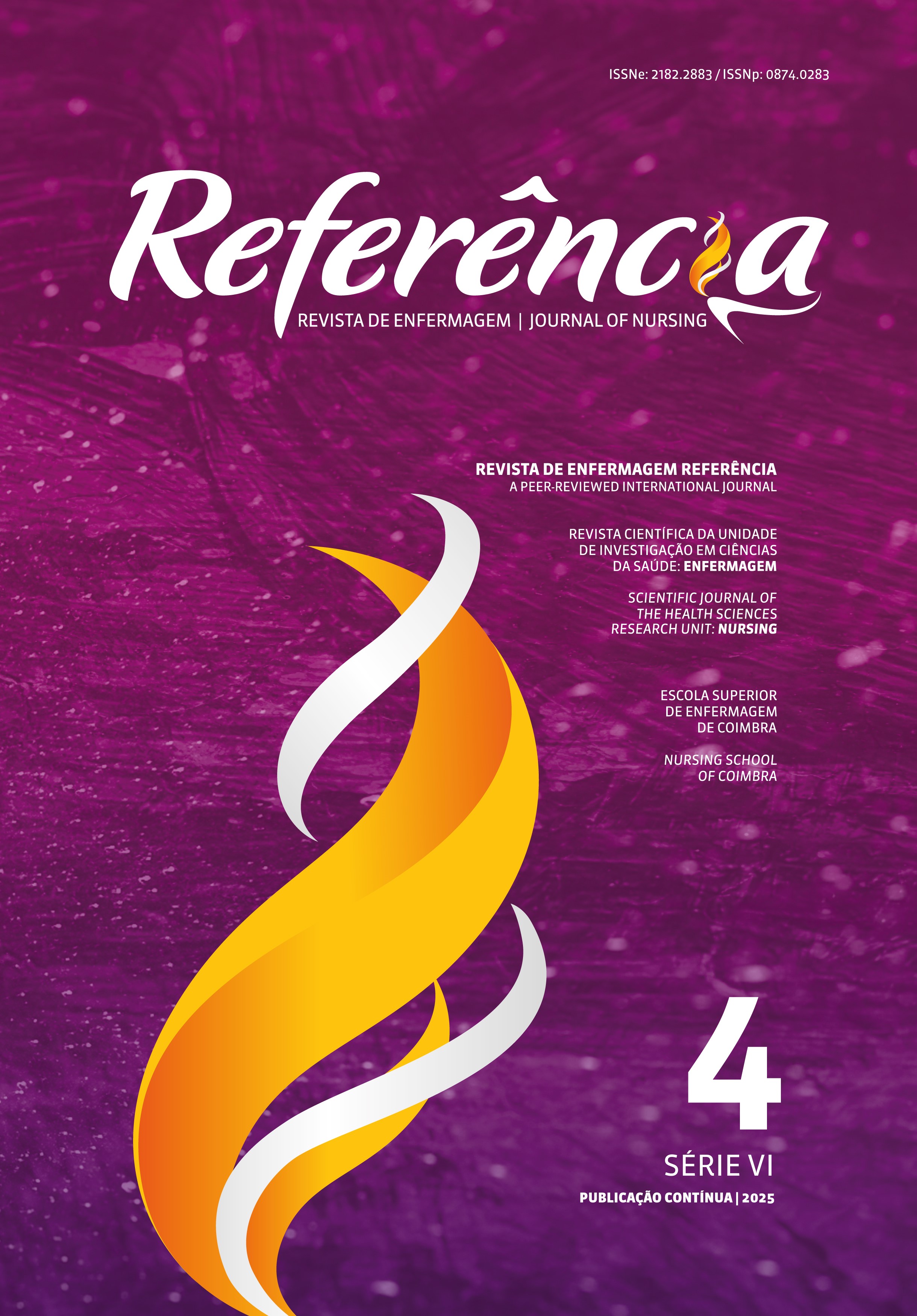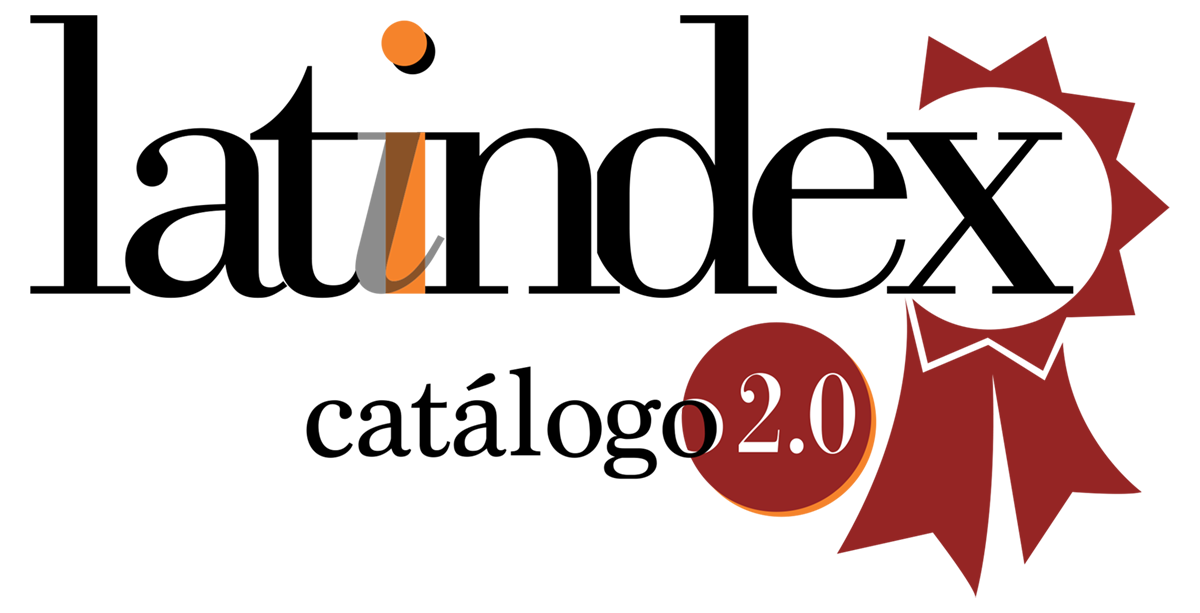Intervenções de enfermagem no serviço de urgência: Perspetivas dos enfermeiros
DOI:
https://doi.org/10.12707/RVI23.36.29896Palavras-chave:
enfermagem, enfermagem de cuidados críticos, enfermagem em emergência, cuidados de enfermagem, terapêutica, serviço hospitalar de emergênciaResumo
Enquadramento: A evolução dos serviços de urgência tornou complexo o enquadramento das intervenções realizadas pelos enfermeiros. Compreender esta evolução é essencial para gerir eficientemente estes recursos e garantir cuidados seguros às pessoas.
Objetivo: Descrever as intervenções de enfermagem implementadas aos clientes no serviço de urgência.
Metodologia: Estudo qualitativo com uma abordagem descritiva e exploratória, que ocorreu em duas etapas sequenciais - (1) identificação das intervenções de enfermagem através da observação não participante, entrevista semiestruturada e questionário e (2) análise de conteúdo às intervenções identificadas
Resultados: Identificaram-se 1429 intervenções que foram categorizadas em 24 dimensões. As mais comuns incluíram a Administração de fármacos, a Avaliação clínica, a Colheita de amostras biológicas, a Gestão da informação clínica e a Manutenção do funcionamento das unidades.
Conclusão: As intervenções identificadas revelam uma ampla gama de práticas que vão além do cuidado direto à pessoa, incluindo a gestão do fluxo de trabalho e da informação clínica. Os resultados do estudo destacam a importância de uma melhor compreensão dessas intervenções para a otimização dos serviços de urgência.
Downloads
Referências
Báo, A. C., Amestoy, S. C., Trindade, L. L., Moura, G. M., & Souza, A. D. (2021). Utilização de indicadores de qualidade: Dificuldade e estratégias na voz de enfermeiros-líderes. Revista de Enfermagem do Centro-Oeste Mineiro, 11. http://dx.doi.org/10.19175/recom.v11i0.3484
Bardin, L. (2009). Análise de conteúdo. Edições 70. Berman, A., Snyder, S. J., Levett-Jones, T., Dwyer, T., Hales, M., Harvey, N., Moxham, L., Langtree, T., Parker, B., & Reid-Searl, K. (2018). Kozier and Erb’s fundamentals of nursing [4th ed.]. Pearson Australia.
Butcher, H. K., Bulechek, G. M., Dochterman, J. M., & Wagner, C. M. (2018). Nursing interventions classification (NIC) (7th ed.). Elsevier.
Costa, A., & Gaspar, P. (2017). Perfil de competências do enfermeiro no serviço de urgência. In M. A. Dixe, P. M. Sousa & P. J. Gaspar (Coords.), Construindo conhecimento em enfermagem à pessoa em situação crítica (pp. 49-67). Instituto Politécnico de Leiria. http://hdl.handle.net/10400.8/2877
Dag, G. S., Biskin, S., & Gözkaya, M. (2019). Determination of nursing procedures and competencies in emergency departments: A cross-sectional study. Nursing Health Sciences, 21(3), 307-315. https://doi.org/10.1111/nhs.12598
Doenges, M. E., Moorhouse, M. F., & Murr, A. C. (2019). Nursing care plans: Guidelines for individualizing patient care across the life span /(10th ed.). F.A. Davis.
Eriksson, J., Gellerstedt, L., Hillerås, P., & Craftman, Å. G. (2018). Registered nurses’ perceptions of safe care in overcrowded emergency departments. Journal of Clinical Nursing, 27(5-6), e1061-e1067. https://doi.org/10.1111/jocn.14143
Esteves, R. P., & Amaral, A. F. (2023). Teor da informação partilhada: Do discurso à documentação na tomada de decisão clínica em enfermagem. Revista de Enfermagem Referência, 6(2), e22006. https://doi.org/10.12707/RVI22006
Flick, U. (2017). The Sage handbook of qualitative data collection. Sage.
Formentin, M. S., Cordeiro, F. R., Zillmer, J. G., Oliveira, S. G., Zilli, F., & Moscoso, C. R. (2021). Barreiras ao cuidado no final de vida em um serviço de urgência e emergência. Revista Uruguaya de Enfermeria; 16(1), 1-13. https://doi.org/10.33517/rue2021v16n1a2
Fronteira, I., Jesus, É. H., & Dussault, G. (2019). A enfermagem em Portugal aos 40 anos do Serviço Nacional de Saúde. Ciência & Saúde Coletiva, 25(1), 273-282. https://doi.org/10.1590/1413-81232020251.28482019
Hayes, C., Jackson, D., Davidson, P. M., & Power, T. (2015). Medication errors in hospitals: A literature review of disruptions to nursing practice during medication administration. Journal of Clinical Nursing, 24(21-22), 3063-3076. https://doi.org/10.1111/jocn.12944
Instituto Nacional de Estatística. (2022). Censos 2021: Resultados definitivos: Portugal. https://www.ine.pt/ngt_server/attachfileu.jsp?look_parentBoui=586659861&att_display=n&att_download=yInternational Council of Nurses. (2019). International Classification for Nursing Practice. https://www.icn.ch/what-we-do/projects/ehealth-icnptm/icnp-browser
Matos, A. B. (2022). Sobrelotação do serviço de urgência do Hospital Garcia de Orta: Razões, consequências, perfil dos utentes e proposta de soluções [Master’s thesis, Iscte - Instituto Universitário de Lisboa]. Repositório Iscte. http://hdl.handle.net/10071/26825
Melnyk, B. M., & Fineout-Overholt, E. (2022). Evidence-based practice in nursing healthcare: A guide to best practice. Lippincott Williams & Wilkins.
Mendonça, S. M. (2021). Raciocínio clínico dos enfermeiros que trabalham no serviço de urgência [Doctoral Dissertation, Universidade de Lisboa]. Repositório da Universidade de Lisboa. http://hdl.handle.net/10451/49995
Moura, A. L. (2017). A pessoa em fim de vida no serviço de urgência: Abordagem terapêutica dos profissionais de saúde [Master’s thesis, Instituto Politécnico de Viana do Castelo]. Repositório da Universidade de Lisboa. http://hdl.handle.net/20.500.11960/1913
Nunes, A. M. (2020). O serviço nacional de saúde português: Caracterização, classificação e perspectivas. Revista de Gestão em Sistemas de Saúde, 9(3), 499-516. https://doi.org/10.5585/rgss.v9i3.18541
Ordem dos Enfermeiros. (2022, December 27). Mais de 7.500 escusas de responsabilidade apresentadas por Enfermeiros. https://www.ordemenfermeiros.pt/noticias/conteudos/mais-de-7500-escusas-de-responsabilidade-apresentadas-por-enfermeiros/
Pereira, A., Corredoura, A. S., Garrido, A. S., Marques, A., Próspero, F., Sousa, F., Penedo, J., Machado, H., Alexandre, J., Pimentel, R., Gomes, S., & Cruz, D. (2019). Relatório grupo trabalho: Serviços de urgências. Grupo de Trabalho Serviço de Urgência. https://www.sns.gov.pt/wp-content/uploads/2019/11/RELATORIO-GT-Urg%C3%AAncias.pdf
Regulamento nº 429/2018 da Ordem dos Enfermeiros. (2018). Diário da República: 2.ª Série, n.º 135. https://diariodarepublica.pt/dr/detalhe/regulamento/429-2018-115698617
Silva, L. A., Dias, A. K., Gonçalves, J. G., Pereira, N. R., & Pereira, R. A. (2019). Atuação da enfermagem em urgência e emergência. Revista Extensão, 3(1), 83-92. https://revista.unitins.br/index.php/extensao/article/view/1688
Vilhena, J. C. (2018). Segurança em contexto de sobrelotação de serviço de urgência [Relatório de estágio, Escola Superior de Enfermagem de Lisboa]. Repositório Comum. http://hdl.handle.net/10400.26/27954
Yang, H., Gonçalves, T., Quaresma, P., Vieira, R., Veladas, R., Pinto, C. S., Oliveira, J., Ferreira, M. C., Morais, J., & Pereira, A. R. (2022). Clinical trial classification of SNS24 calls with neural networks. Future Internet, 14(5), 130. https://doi.org/10.3390/fi1405013






















